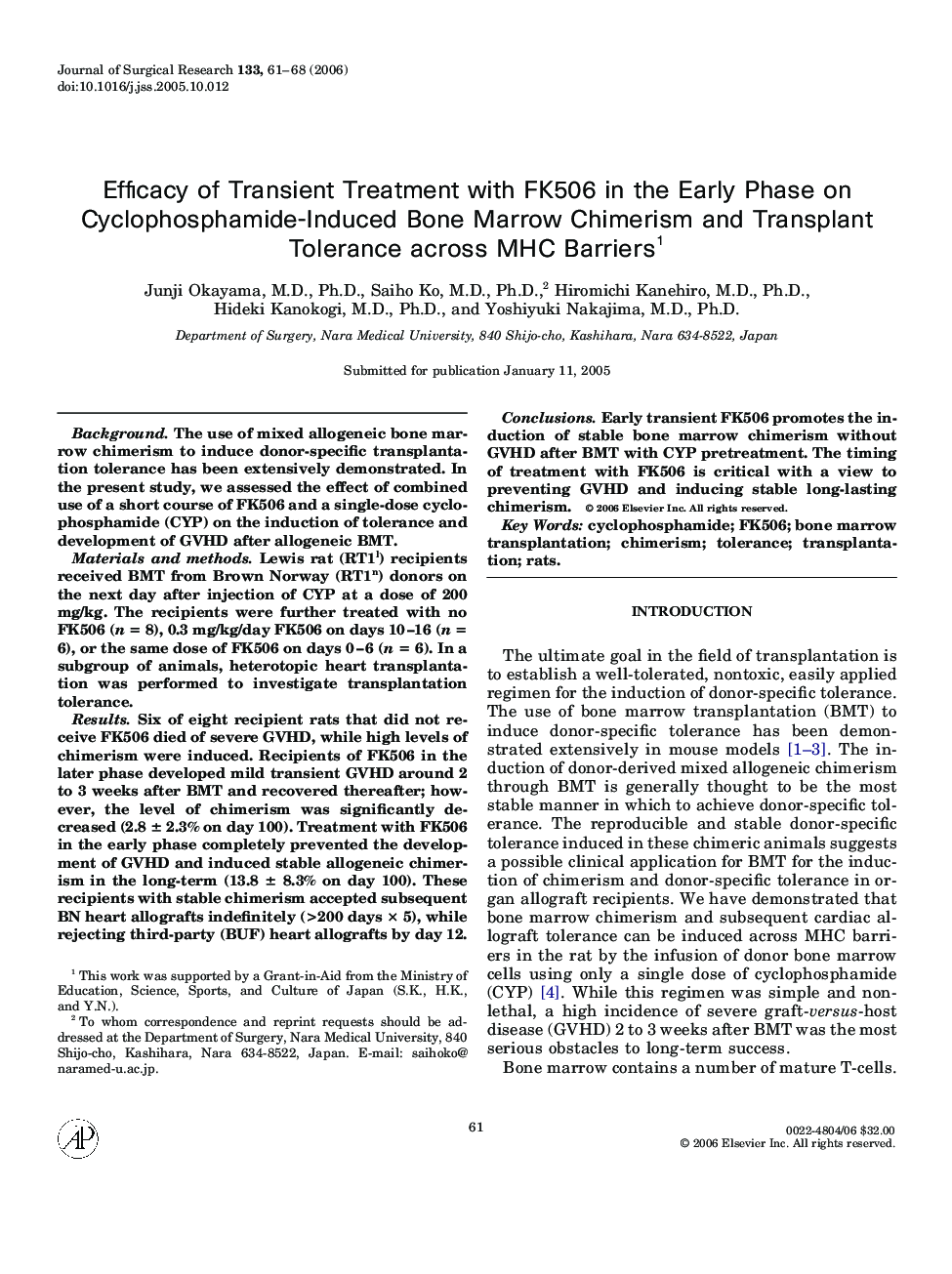| Article ID | Journal | Published Year | Pages | File Type |
|---|---|---|---|---|
| 4305080 | Journal of Surgical Research | 2006 | 8 Pages |
BackgroundThe use of mixed allogeneic bone marrow chimerism to induce donor-specific transplantation tolerance has been extensively demonstrated. In the present study, we assessed the effect of combined use of a short course of FK506 and a single-dose cyclophosphamide (CYP) on the induction of tolerance and development of GVHD after allogeneic BMT.Materials and methodsLewis rat (RT1l) recipients received BMT from Brown Norway (RT1n) donors on the next day after injection of CYP at a dose of 200 mg/kg. The recipients were further treated with no FK506 (n = 8), 0.3 mg/kg/day FK506 on days 10–16 (n = 6), or the same dose of FK506 on days 0–6 (n = 6). In a subgroup of animals, heterotopic heart transplantation was performed to investigate transplantation tolerance.ResultsSix of eight recipient rats that did not receive FK506 died of severe GVHD, while high levels of chimerism were induced. Recipients of FK506 in the later phase developed mild transient GVHD around 2 to 3 weeks after BMT and recovered thereafter; however, the level of chimerism was significantly decreased (2.8 ± 2.3% on day 100). Treatment with FK506 in the early phase completely prevented the development of GVHD and induced stable allogeneic chimerism in the long-term (13.8 ± 8.3% on day 100). These recipients with stable chimerism accepted subsequent BN heart allografts indefinitely (>200 days × 5), while rejecting third-party (BUF) heart allografts by day 12.ConclusionsEarly transient FK506 promotes the induction of stable bone marrow chimerism without GVHD after BMT with CYP pretreatment. The timing of treatment with FK506 is critical with a view to preventing GVHD and inducing stable long-lasting chimerism.
